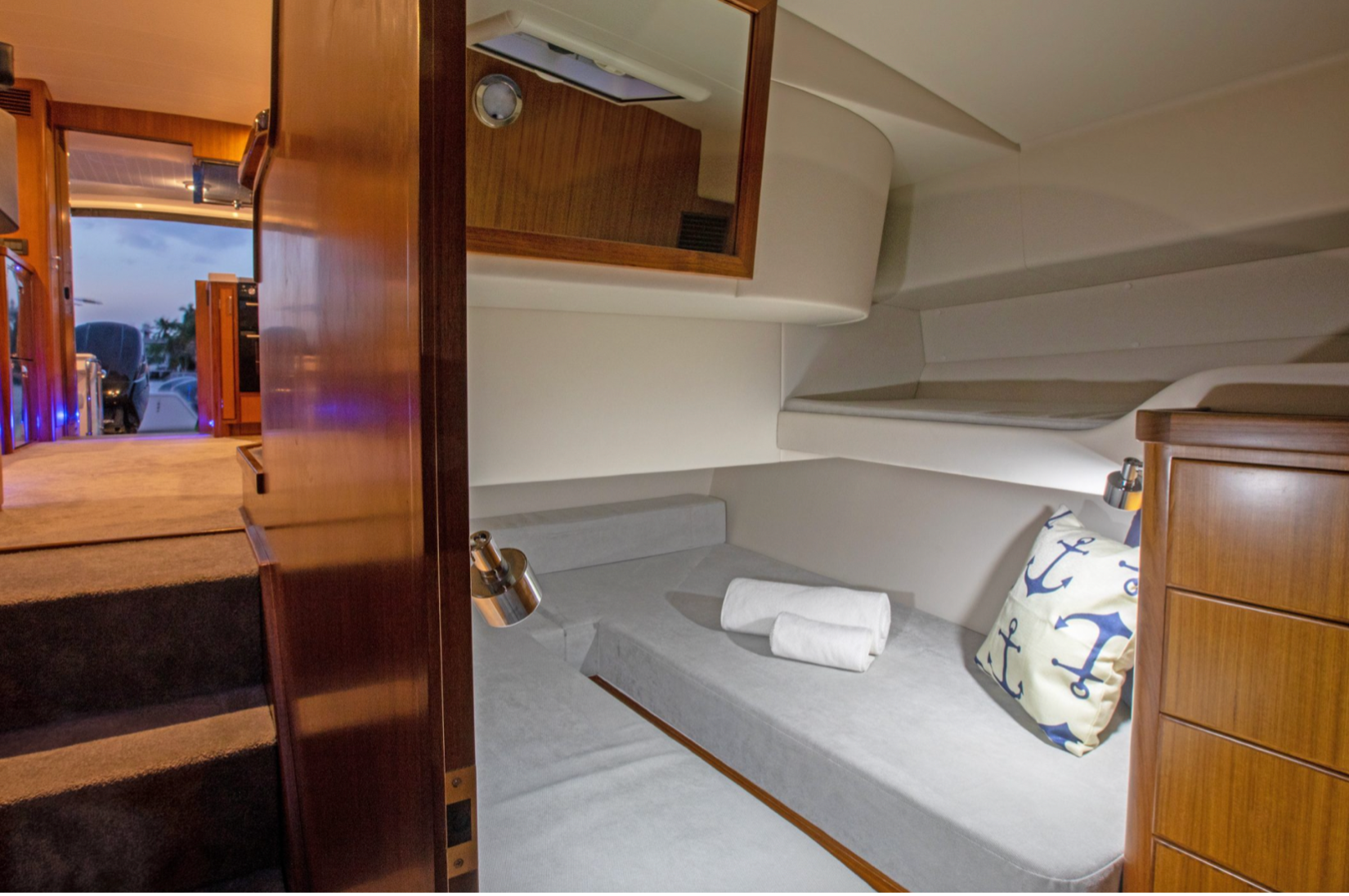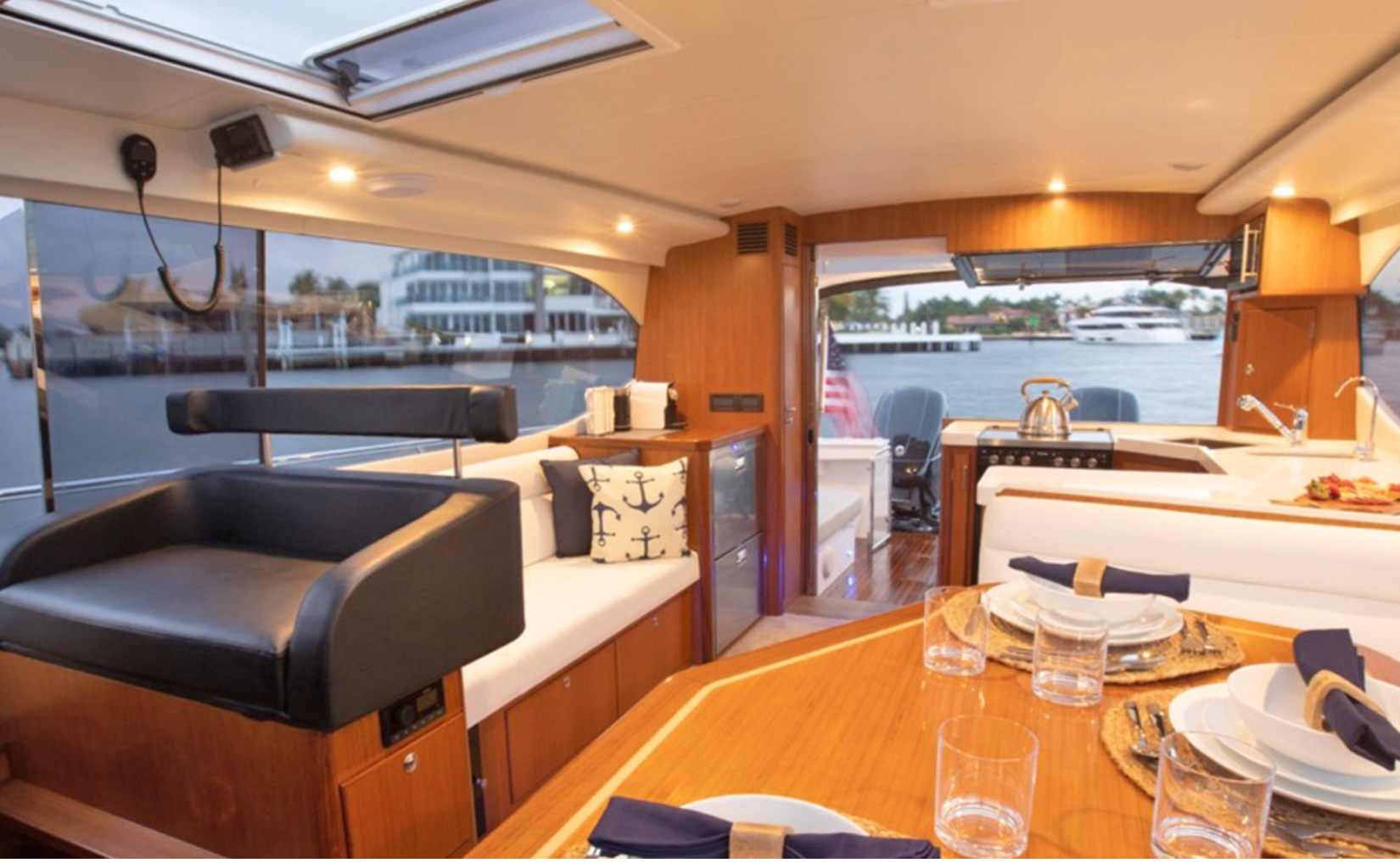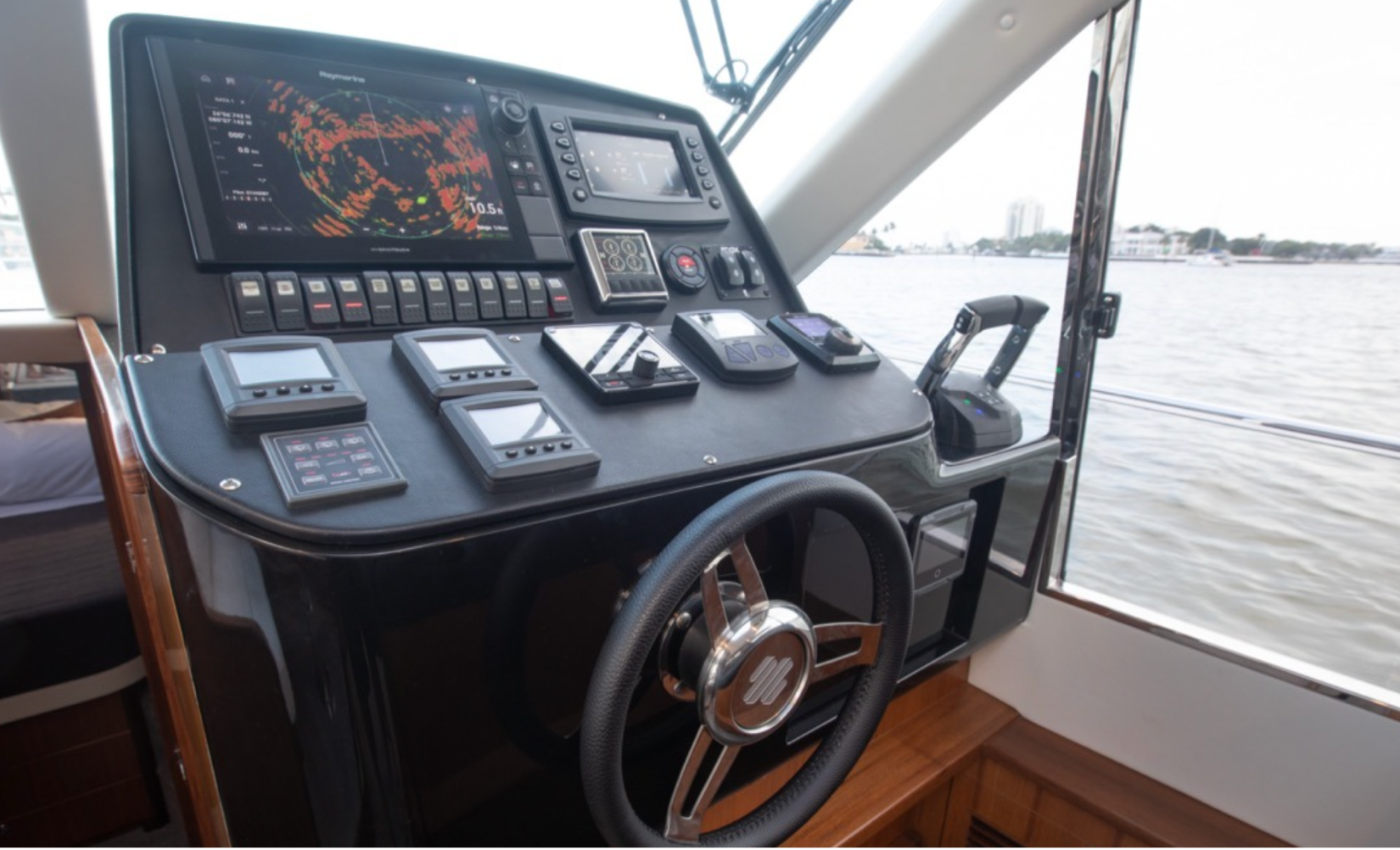New Boat: Hylas M47 w/Twin 300-hp Cox Diesels
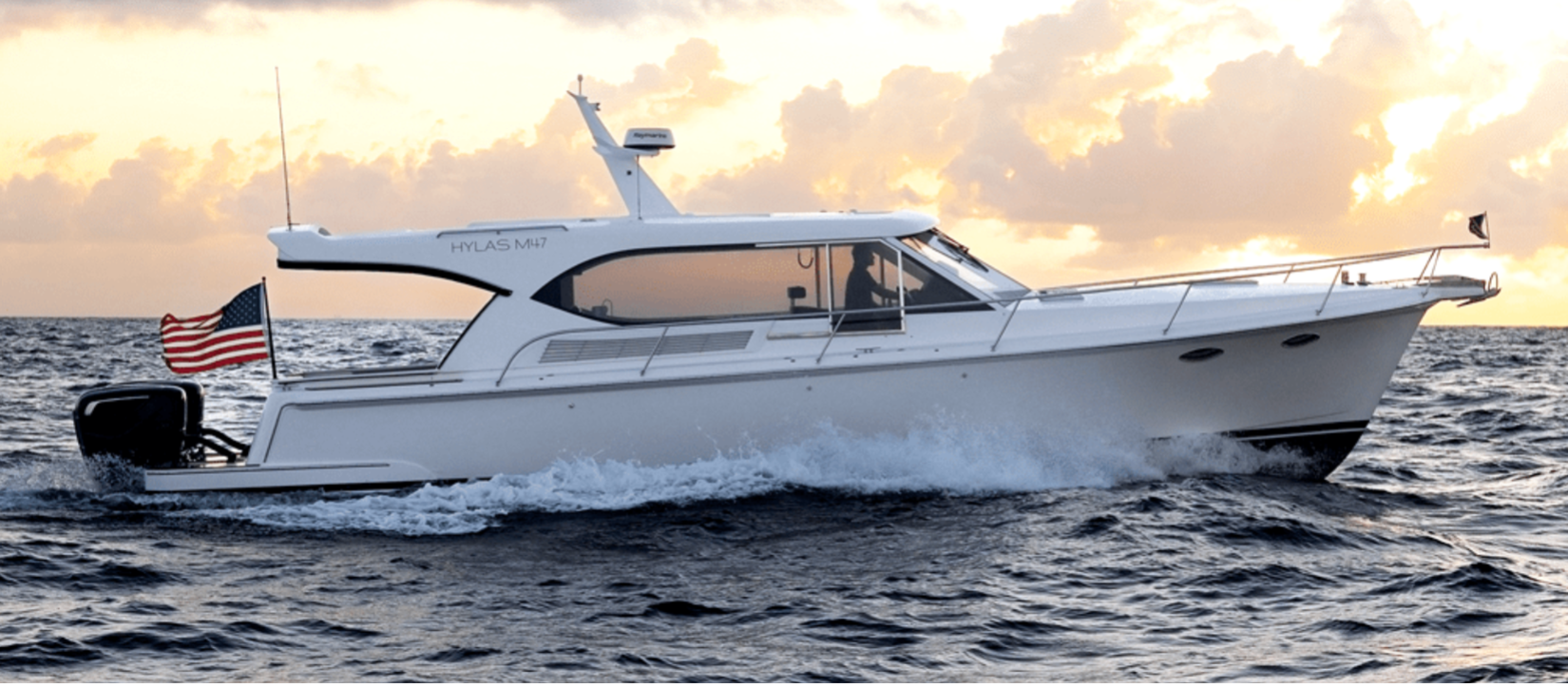
Hylas M47 Motoryacht
- Length Overall: 47' (14.33 m)
- Length of Waterline: 42' 8" (13 m)
- Beam: 13' 6" (4.12 m)
- Draft: 3' 2" (1 m)
- Fuel Capacity: 475 gal (1,798 L)
- Water Tankage: 190 gal (720 L)
- Black Tank Capacity: 25.10 gal (95 L)
- Displacement: 20,944 lbs (9,500 kg)
- Engine: Twin 300-hp Cox CXO300
- Cabins: 2
- Sleeping Capacity: 7
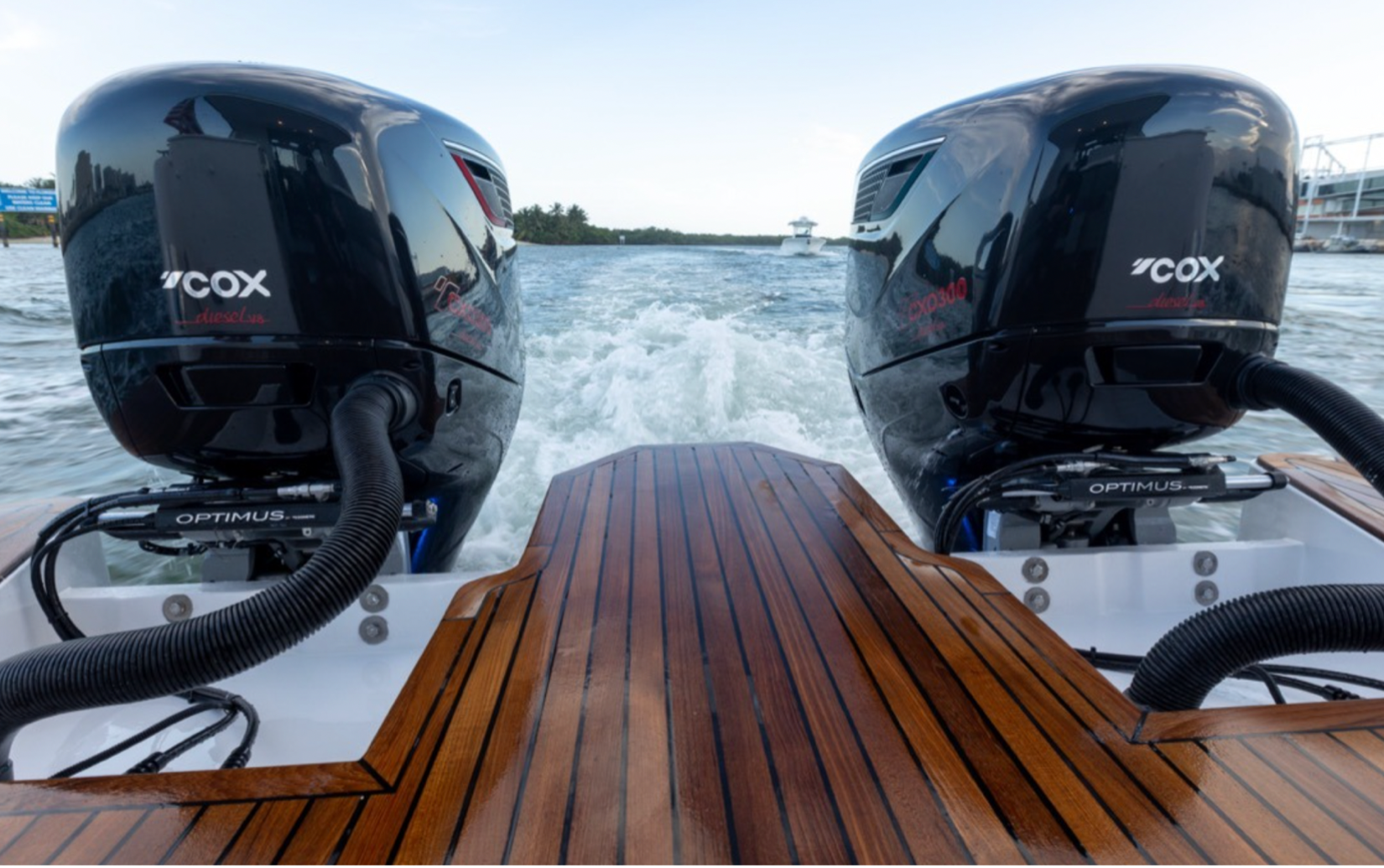
Hylas Yachts has been building boats for nearly 40 years in Taiwan and is now being managed by second and third-generation family members who grew up in one of the best boat yards in Taiwan. It is from Taiwan that many of the finest yachts in the world are built, including Fleming, Ocean Alexander, Kadey-Krogen, Horizon, Hargrave and many others.
Hylas specialized in premium-quality, world-class sailboats for decades, then, in 2018 the company went to the dark side, as sailors like to say. It introduced the M44, its first powerboat. Now, it is introducing the M47, which is built on essentially the same hull, trading out a large swim platform for a new transom designed to hold and harness the twin 300-hp Cox diesel outboards. It is also building the M49 on a modified version of the same hull, which is powered by twin 370-hp Yanmar inboard diesels.
How Fast?
The first thing everyone naturally wants to know is "how fast" the M47 goes with its twin 300-hp Cox diesels. After all, there are other cruisers built with this displacement that require twin 600-hp gas engines or triple 450s. And this is precisely where the Hylas M47 gets interesting.
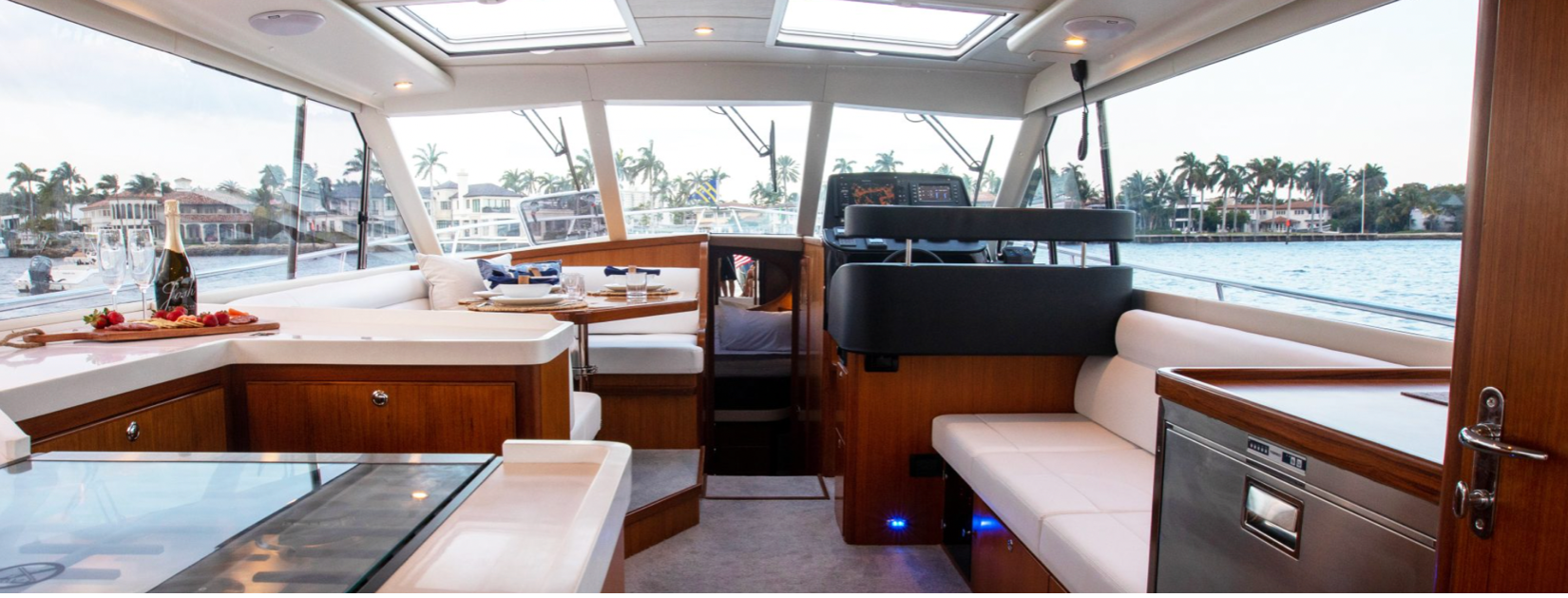
According to Hylas, the Cox outboards propel the M47 to a 31-knot (35.7 mph) top speed. At a 17-knot (19.6 mph) cruise, the builder says, she burns just 15 gph, meaning that she gets 1.1 mpg. At that speed, gas outboards are at a distinct disadvantage when it comes to fuel economy because of their relatively weak torque in the lower RPM ranges.
The Cox Outboard Diesel
The 300-hp Cox outboard diesel has been designed from scratch, prototyped, tested and finally come to market in the last year after a 10-year gestation period and over $124 million (USD) spent on its development by the UK firm. The engine has an aluminum block, the only one we know of in the industry, and as a result weighs 866-lb. (393.6 kg.). This is about 260 lbs. (163 kg.) more than some 300-hp gas engines, but given the fact that it's a diesel engine, and the drive shaft, bevel gears and prop shaft all have to be so robust to handle the engine's considerable torque, the weight is an accomplishment. It has twin turbochargers which maximize power and lean burning.
Designed for cruising. The standard M47 has a fuel capacity of 475 gallons (1,757 L), which gives her a range of 1,000 nautical miles at 9 knots, according to the builder. Optional larger fuel tanks can extend her range to 1,500 nm, we're told. The 475 gal. fuel capacity should be more than adequate for what most boaters like to do, which is to cruise around close to home mostly, with an occasional jaunt taking two weeks or so, stretching 300 or 400 miles.
Even though its horsepower rating is just 300, the secret of this engine's prodigious power to haul heavy loads is its 736 ft/lb (998 nm) of torque at 1700 RPM. Because it produces torque at a much lower RPM than gas engines, it gets a boat on plane faster and keeps it there, resulting in much lower fuel consumption. The 300-hp Cox engine has 39% more torque than most 300-hp outboard gas engines on the market, which don't deliver peak toque until 4000-4500 RPM.
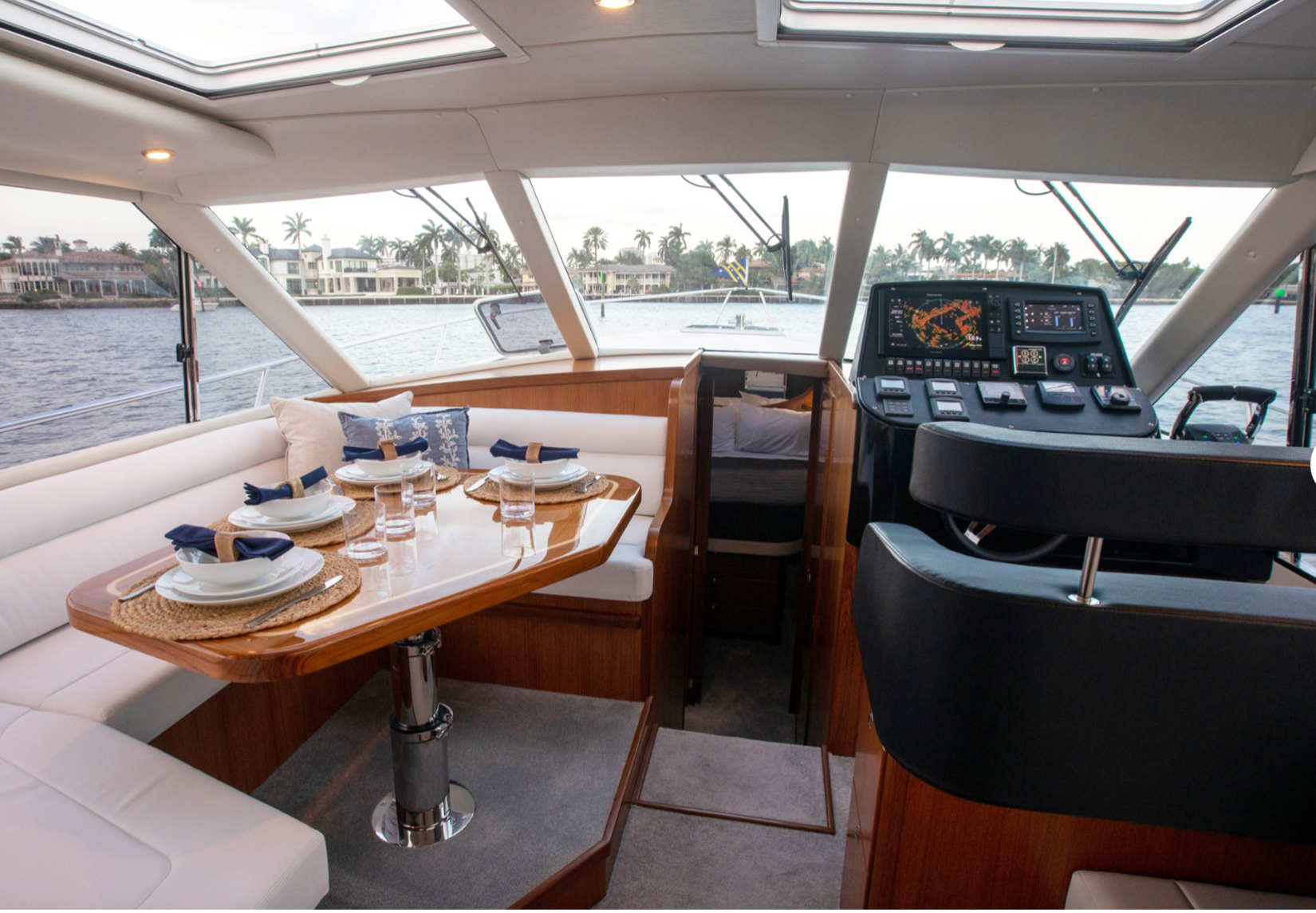
The M47 was designed by Dean Salthouse, who has been designing yachts for more than 65 years in New Zealand. This southern hemisphere-based architect has developed a hull that has been tested around New Zealand’s rugged coastlines. We're told that the boat’s styling is based on commercial workboats and has lines that are pleasing to boaters Down Under — and they should please Americans, too, because of her classic lines that will never go out of style.
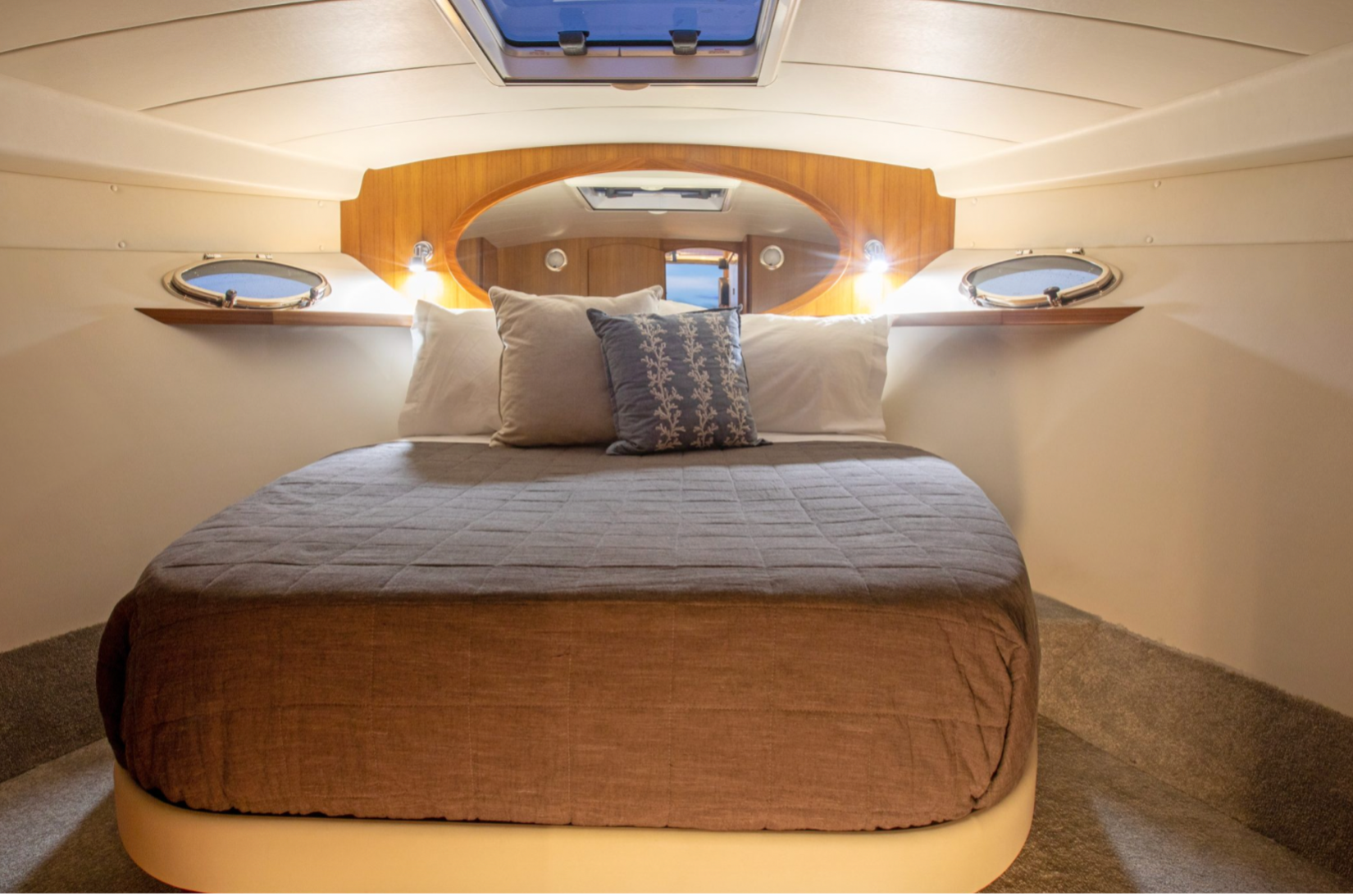
She has two staterooms and can sleep five people. The guest stateroom’s lower double splits into twins, and there’s a Pullman berth outboard. In a pinch, two more guests can be accommodated in the salon by converting the settee. One unusual aspect of this boat is a day head on the main deck, which helps accommodate main salon sleepers and is handy for everyone on deck during the day.
Standard features on the M47 include a Raymarine electronics suite with autopilot, joystick control, Zipwake trim tabs, a lithium-ion battery package and an HVAC system that the builder says allows for generator-free operation. The boat is prewired for an optional Seakeeper 5 gyrostabilizer and groves in the cockpit’s overhead permit a Strataglass enclosure for four-season cruising.
